1. Introduction
Rubber ecosystem The major tree crop in Thailand > 2.7 million ha in 2007, world > 10 M ha. Currently 80 % of the area is in the Southern region Distribution of rural holdings: rubber 54.1 %, permanent crop/forest 29.0%, rice 11.1%. Land use change: the North-Eastern rush (dryer area). Already 300,000 ha in the E and NE, but plans are for 1 M ha to be planted.
2. Leaf and canopy photosynthesis, measurement & modelling
Estimation of parameters of Farquhar’s model of leaf photosynthetic capacity
Impact of
- Temperature (from 10 to 40 ˚C and acclimation at 18°C)
- Tree age (2 and 13 years)
- Leaf age
- Season (October 2006, December 2006 and April 2007)
- Leaf location within the canopy
- Clone (RRIM600, RRIT251 and PB260)
Maximal carboxylation rate (Vcmax) and maximal electron transport rate (Jmax) were estimated by fitting CO2 response curve of net photosynthesis (A/Ci curve).
Next: Integration at canopy scale comparing several models to describe canopy structure and light interception.
3. Tree water status, sapflow & soil water balance
Partionning of total water flux between soil and understorey evaporation (E) and stand transpiration (T)
- Sapflow measured by heat dissipation method (Granier 1985), 20 mm long home-made probes (calibrated by gravimetry)
- Trees sampled according to distribution of trunk within the plot to calculate stand transpiration.
- On a tree scale, daily time-course of leaf water potential measured across the canopy together with climatic data and soil moisture content to understand regulation of water use by the tree.
- Petiole sensitivity to embolism studied, as the possible limiting factor for hydraulic conductance in rubber tree (Sangsing 2004).
4. Flux measurements by eddy covariance
CO2 and water fluxes are measured by eddy covariance (ED). ED methodology adapted from experience in other tropical tree crop plantations, (coconut tree in Vanuatu, eucalypt in Congo).
The flux tower is 25 m high.
Sonic anemometer Young 81000V 20 Hz, open path gas analyser LI-7500, Data-logging and pre-processing by the “Tourbillon” software (INRA, France). Post-processing by EdiRe software (U. of Edinburgh, UK).
Weather station
Rn, Rg, PAR, diffuse PAR, reflected PAR, Air T°, Rh, wind speed, wind direction, rainfall, vertical profile of air temperature (TCs).
Energy balance is assessed by measurements of net radiation (Rn) and estimation of the energy partitioning among heat fluxes and heat storage.
5. Net primary productivity
- Dynamics of above-ground biomass assessed by tape measurements of trunk diameter, tree height and allometric relationships.
- Litter traps used to assess both litter accumulation and, together with fish-eye pictures, LAI.
- Root biomass, fine root production, mortality and turn-over assessed by combination of root observation window, ingrowth cores and sequential coring
6. Conclusion:
Beyond the evaluation of the fluxes, our design provides information on the partition among the components and functions of rubber plantation ecosystem. Thereby, the validated CO2 and H2O fluxes will be used to model gas exchanges of one of the most important tree-crop ecosystem in tropical Asia, according to climate and other environmental parameters as well as crop management.
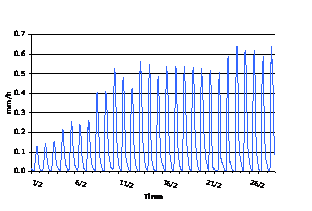
Stand transpiration Dry season Feb 2007 Leaf fall occurs in January, only some leaf remain.
Re-foliation is initiated without delay and completed within two weeks
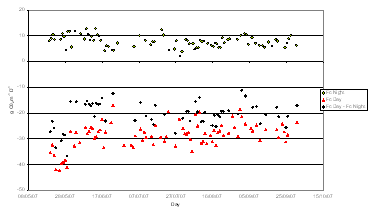
C02 daily flux May-Sept 2007, corrected, no gap filling
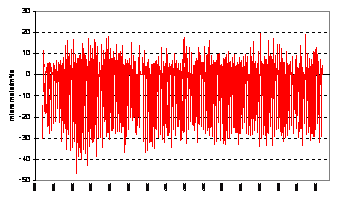
CO2 flux May-Sep 2007, corrected, no gap filling.
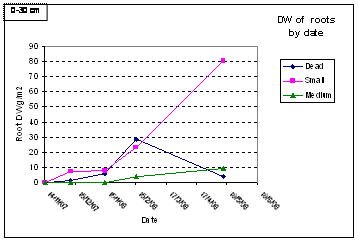
Dynamics of root growth and root mortality in ingrowth cores installed in November 2007
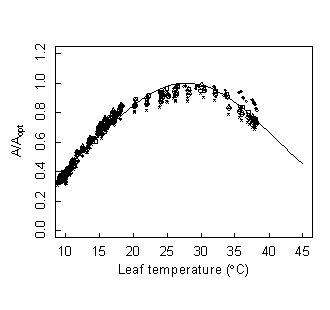
Temperature response ofmaximum CO2 assimilation rate (Amax) in rubber leaf.
The full range of possible temperature in Asia areas suitable for rubber cultivation is covered.
|





